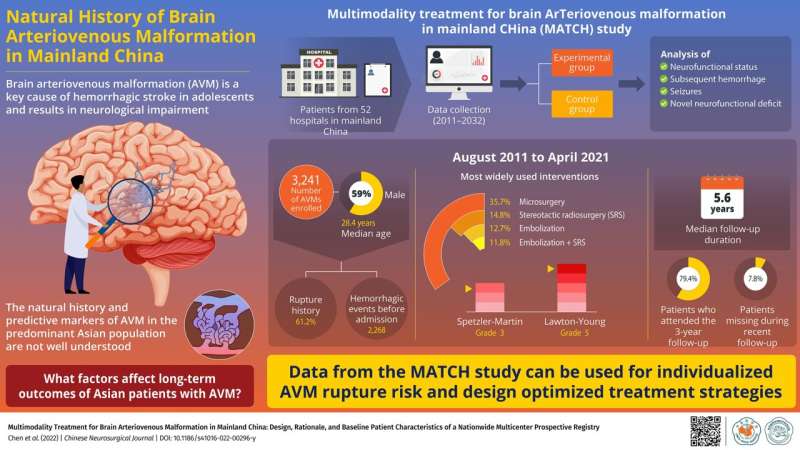
Brain arteriovenous malformation (AVM) is the abnormal entanglement of arteries and veins in the brain, which disrupts the normal flow of blood and can lead to hemorrhage, seizures, and neurological impairment in affected individuals.
Ruptured AVMs are highly fatal and require immediate medical intervention. However, the treatment options for ruptured and unruptured AVMs are ambiguous. Thus, there is a need to personalize treatment protocols depending on disease severity. Although multiple studies have been conducted to investigate AVMs, its natural history in the Asian population is poorly understood.
To this end, a team of researchers led by Dr. Xiaolin Chen and Dr. Yuanli Zhao from the Department of Neurosurgery, Beijing Tiantan Hospital, Capital Medical University, China is conducting a nationwide, prospective study—the Multimodality treatment for brain ArTeriovenous malformation in mainland CHina (MATCH) study—to investigate common factors affecting the treatment strategies and long-term outcomes of AVMs in the Asian population. The study is ongoing since August 2011 and is expected to conclude in April 2032.
“We wanted to understand the history of AVMs in mainland China and identify investigative predictors of AVMs in the residing population—an area that has not been studied extensively,” remarked Dr. Chen while discussing the motivation behind this study, the latest findings of which were published in the Chinese Neurosurgical Journal.
MATCH is a nationwide registry of consecutive AVM patients from 52 hospitals in mainland China. First, the team collected detailed clinical information of enrolled patients diagnosed with AVM. Based on disease severity, they developed a standardized treatment protocol, which included interventions such as microsurgery, embolization, stereotactic radiosurgery (SRS), multimodal treatment, and conservation. Based on the type of treatment received, patients were divided into experimental and control groups.
Next, the team examined the efficacy of different treatments on these patient groups and assessed them for neurological indications and medication after 3 months, 1 and 2 years, and 3 years.
As of April 2021, 3,241 patients with AVMs were enrolled as part of this study. An astonishing 59% of them were male with a median age of 28.4 years. Moreover, a significant number of these patients had a history of AVM rupture and hemorrhagic incidents, with median Spetzler-Martin and Lawton-Young grades of 3 and 5, respectively.
Microsurgery was the most popular treatment choice overall, while a combination of SRS and embolization was the most popular choice among multidisciplinary treatment options. The response was promising with 79.4% of patients completing their 3-year follow-up assessments.
Source: Read Full Article